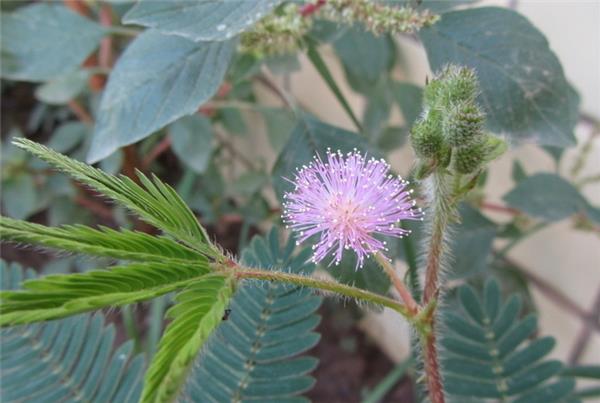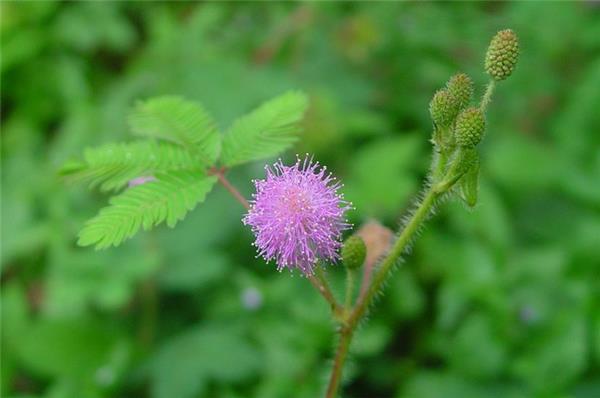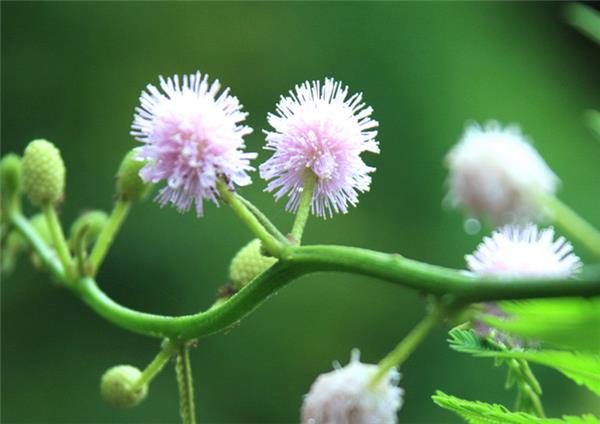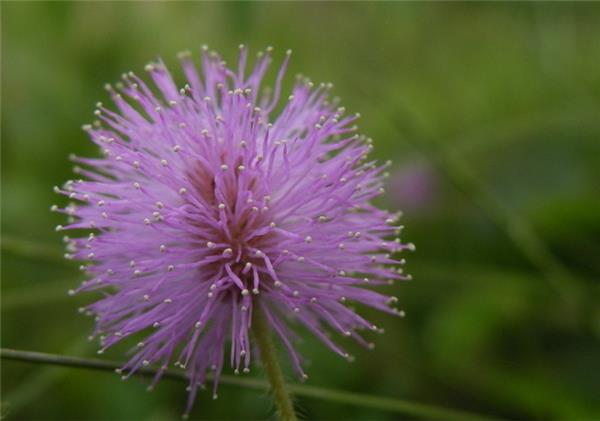[the function of mimosa] what are the uses of mimosa
Mimosa originated from tropical South America. With the international development, mimosa has been widely cultivated in China. Mimosa has a strong ability to adapt to the environment and likes to grow in a warm and humid environment. It is more common in hillside jungles and roadside humid places. Now many families plant mimosa as a family ornamental plant.

First, the function of mimosa
1. Watch
Mimosa plant shape scattered, feather leaves slender and beautiful, its leaves are closed at a touch; mimosa flowers are many and beautiful, charming, giving people the impression of weak and elegant. It can be planted in the corner of the courtyard or potted in the window. When giving flowers, gently cover the potted plants with pink tulle and tie them with pink ribbons and knots. It would be more interesting if you could adorn it with pink mohair balls.
2. Forecast the weather
Mimosa is a wonderful plant that can predict changes in the weather. If you touch it with your hand, its leaves close quickly and open slowly, indicating that the weather will clear up; if you touch mimosa, its leaves contract slowly, droop slowly, or even reopen a little bit, this means that the weather will change from sunny to overcast or it is going to rain.
3. Earthquake prediction
According to Turkish seismologist Erjiang, a few hours before a strong earthquake, the leaves of mimosa, which are sensitive to the outside world, suddenly shrink and then wither. In earthquake-prone Japan, scientists have found that under normal circumstances, mimosa leaves open during the day and close at night. If the leaves of mimosa close during the day and open at night, it is a sign of an earthquake.
4. Medicinal use
It has the effects of clearing heat and diuresis, resolving phlegm and relieving cough, calming nerves and relieving pain, detoxification, removing blood stasis, hemostasis, convergence and so on. For colds, children with high fever, acute conjunctivitis, bronchitis, gastritis, enteritis, urinary calculi, malaria, neurasthenia; external treatment of swelling and pain, sores, hemoptysis, herpes zoster.

Second, the culture methods of mimosa:
1. Watering: mimosa likes to be wet and watered once a day during the summer growing season.
2. Soil: mimosa has strong adaptability and lax requirements on soil, grows well in moist and fertile soil, and sows in the culture soil mixed with 2 parts of rotten leaf soil, 3 parts of garden soil and 5 parts of fine yellow sand.
3. Sunshine: mimosa likes plenty of light and is slightly resistant to semi-shade.
4. Temperature: mimosa, as a potted ornamental flower, should be moved into the sunny place indoors in winter and can survive the winter safely at a room temperature of 10 ℃ and 12 min.
5. Fertilization: mimosa does not need much fertilizer during its growing period, so you can apply dilute liquid fertilizer 2mer for 3 times, do not grow in vain, because mimosa is mainly used as an interesting foliage flower, small size is better.

Third, the propagation mode of mimosa.
Sow and propagate with seeds
The seeds can be sowed in spring and autumn. Before sowing, the seeds can be soaked in 35 ℃ warm water for 24 hours, sowed in shallow pots and covered with soil 1 / 2 square meters. Under the condition of 15 / 20 ℃, the seedlings will emerge after 7 / 10 days, and the seedlings will be put on the pot when the seedlings are 5 meters high. The strong mother plant was selected when the seed was collected, and the management was strengthened. In the fruiting period, the pods were picked along with ripening, and the pods would crack automatically when they were ripe.
Mimosa is a taproot plant with few fibrous roots, which is suitable for sowing and reproduction, and it is best to adopt the method of direct seeding to avoid root injury by transplanting; if transplanting is necessary, it should be transplanted at the seedling stage, otherwise it is not easy to survive, as an annual mimosa, it is generally sown indoors in early spring.
Live broadcast in a small basin
It can also be planted in shallow pots. The sowing soil was prepared with 20% rotten leaf soil, 30% garden soil and 50% fine yellow sand after sieving. When sowing, first put an appropriate amount of culture soil in the basin, smooth and compacted, sprinkle through water with a spray pot, and sow immediately after all the water permeates.

Mimosa has ornamental and medicinal functions, and it also has the unique role of weather prediction and earthquake prediction. Those who like mimosa might as well raise several pots and decorate them at home.
Related
- Wuhan Hospital Iron Tree Blooming Result Was Instantly Frightened by the Gardener Master
- Which variety of camellia is the most fragrant and best? Which one do you like best?
- What is the small blue coat, the breeding methods and matters needing attention of the succulent plant
- Dormancy time and maintenance management of succulent plants during dormancy
- Minas succulent how to raise, Minas succulent plant pictures
- What are the varieties of winter succulent plants
- How to raise succulent plants in twelve rolls? let's take a look at some experience of breeding twelve rolls.
- Attention should be paid to water control for succulent plants during dormant period (winter and summer)
- Watering experience of twelve rolls of succulent plants
- Techniques for fertilizing succulent plants. An article will let you know how to fertilize succulent plants.



